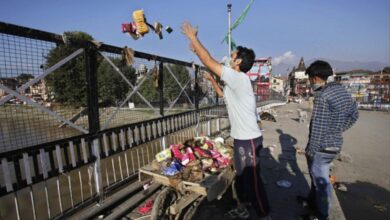Unlock 2.0 – Implication on the economic activities
Covid-19 is an unprecedented humanitarian challenge for all the countries and the national lockdown gives the concentrated chance to flatten this pandemic curve. This helps to settle the increase in cases of Covid-19 patients all over India, which majorly affects the business and economic procedures. After three months of an intense lockdown, now the attention has been shifting to reopening the economy while encompassing the virus, this procedure is adopted by most of the nations.
In the lockdown, India’s economy has functioned from 50 to 57 percent of its full activity. The early stage of the lockdown was passed easily and manageably with the availability of the economic cost but it is clear that it’s not going to disappear easily. The economy will be needing persistent care to manage the infectious risk for a longer period. Some countries are resuming the lockdown due to a rise in the infection rates, India may not be an exception.
India’s labor, manufacturing and distribution chains are developed in different sectors and geographies especially considering the Goods and Services used by Citizens. India performs inter-state Trade and commerce activity to manage their living. As a result, economic activity in one country affects the economic activity of another. Such as, half of all the drivers are mostly engaged in the freight movement across countries and states coming from different districts. Curtailment on the movement of these people could impact the logistics activity.
Therefore, Unlock 2.0 is a moderate-opening case, according to the recent opening guidelines given by MHA(Ministry of Home Affairs) to allow all districts except the containment zone to operate most activities. There are around 130 red-zone districts which are taken as containment zones. The lack of inadequate work opportunities and an increase in the population is the major concern at this time. In populated states such as Maharashtra, Tamil Nadu, Uttar Pradesh, West Bengal, there are around five million inactive workers searching for jobs. This level of unemployment now faced by India can result in a burden on the economy. To resolve these issues, Unlock allows businessmen to open their offices. The fear of the Covid-19 is depleting over time, people need to work to handle their daily expenses. Restaurants, shops, and religious places are opened after the first stage of Unlock, but still, there is no rush of people flocking to these places even being bottled up at their homes for so long. Two weeks is a short time but enough to see the continuous uncertainty in people’s minds. There is a visible reluctance or a fear in them to move to a pre-lockdown life.
Another challenge the government faces after unlocking is how to put the financial sector back on its feet. Panagariya said that “India is facing a sudden health crisis that has led to the sudden stop in the economy and affecting the financial status”. To return the economy to the pre-COVID-19 state, a health crisis is needed to be dealt with first then the only concern will be to stabilize the economy and financial issues. Due to all these problems, Will it be possible to quantize the GDP for 2020-21? I think not. Unlocking was one of the measures to revive growth. With the country witnessing the reverse migration for the first time, there are more developments and opportunities for redefining the investment priorities and creating more enhanced geographically distributed models. Industries with the help of state governments are advised to invest in rural areas which will generate jobs and strengthen the rural sector’s share in GDP. This outbreak affected almost every sector but majorly health. In India, where the public was already spending 1.3% of the GDP on medical expenses, this crisis heightened the need of investing more in the healthcare sector. Approximately, India needs to raise health care spending to 3% of the GDP and needs a long term strategy to boost the immunity of the population with different measures.
Knowing that the government is fiscally constrained and requires efforts to provide a boost to the economy such as a 100% credit guarantee to MSMEs, private investments, higher investments in different technologies. Alongside, India needs to be focused on its export activities, both for manufactured goods and its services. The greater collaboration among start-ups, industries, academia, and various other sectors along with the government would create an innovative and sustained ecosystem benefitting all.
Over the next many months, India’s economy will operate along with the Covid-19 by building various dynamic actions and changes forming lockdowns and restarts. Unlocking the way, there are a lot of challenges faced by the Indian economy. Pandemic causing a lot of distress and fear among individuals and businesses, the collaboration between industry-governments will play a significant role in restarting the growth of the country.




